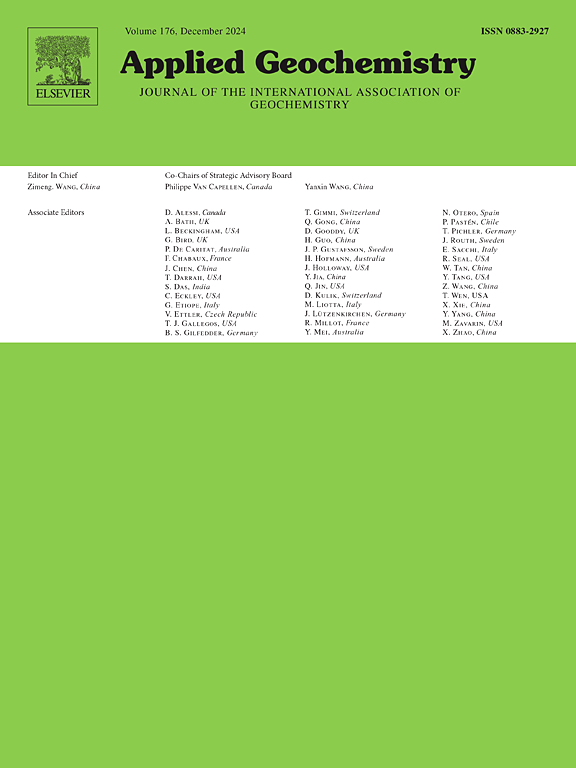Towards a definition of a spatial geochemical compatibility: workflow, validation, and application
IF 3.1
3区 地球科学
Q1 GEOCHEMISTRY & GEOPHYSICS
引用次数: 0
Abstract
Decision-making in environmental monitoring and remediation is heavily influenced by technical and regulatory tools. However, these tools often fail to take full account of the spatial heterogeneity of geological matrices. This diffuse behavior results in an ineffective approach to managing local environmental characteristics. To address this issue, stochastic geochemical modelling allows for more informed management of remediation thresholds by quantifying the spatial uncertainty of a regionalized variable. In this context, our research aims to explore the concept of geochemical compatibility of a matrix using a stochastic approach. In particular, the spatial geochemical compatibility (SGC) of stream sediments will be investigated using a tailored processing workflow to ensure a priori data quality control. The proposed workflow formalises a multi-step computational pipeline that includes the definition of computational domains, the implementation of geostatistical techniques and the performance checking of the stochastic model. The application of the pipeline provides a digital stochastic-based representation of the uncertainty about stream sediments of a heterogeneous area for 34 elements.
For each element, 8 layers summarize as many statistical indices as are extracted from the local cumulative probability density functions. The pipeline has been validated by testing it in the heterogeneous mountainous area of the Liguria region (Italy) and a multilayer high-resolution (200 m) geochemical numerical model (GNM-L) has been generated. This model is starting from 2021 publicly distributed and used as a decision support tool for SGC in routine regulatory and monitoring practice. It empowers the community with geochemical knowledge and helps local decision makers to understand and use the concept of environmental uncertainty. Deep control over each computational step and quality control of performance suggests how the pipeline can be generalized in complex areas, from single catchments to entire countries, and for different regionalized variables.

求助全文
约1分钟内获得全文
求助全文
来源期刊

Applied Geochemistry
地学-地球化学与地球物理
CiteScore
6.10
自引率
8.80%
发文量
272
审稿时长
65 days
期刊介绍:
Applied Geochemistry is an international journal devoted to publication of original research papers, rapid research communications and selected review papers in geochemistry and urban geochemistry which have some practical application to an aspect of human endeavour, such as the preservation of the environment, health, waste disposal and the search for resources. Papers on applications of inorganic, organic and isotope geochemistry and geochemical processes are therefore welcome provided they meet the main criterion. Spatial and temporal monitoring case studies are only of interest to our international readership if they present new ideas of broad application.
Topics covered include: (1) Environmental geochemistry (including natural and anthropogenic aspects, and protection and remediation strategies); (2) Hydrogeochemistry (surface and groundwater); (3) Medical (urban) geochemistry; (4) The search for energy resources (in particular unconventional oil and gas or emerging metal resources); (5) Energy exploitation (in particular geothermal energy and CCS); (6) Upgrading of energy and mineral resources where there is a direct geochemical application; and (7) Waste disposal, including nuclear waste disposal.
 求助内容:
求助内容: 应助结果提醒方式:
应助结果提醒方式:


